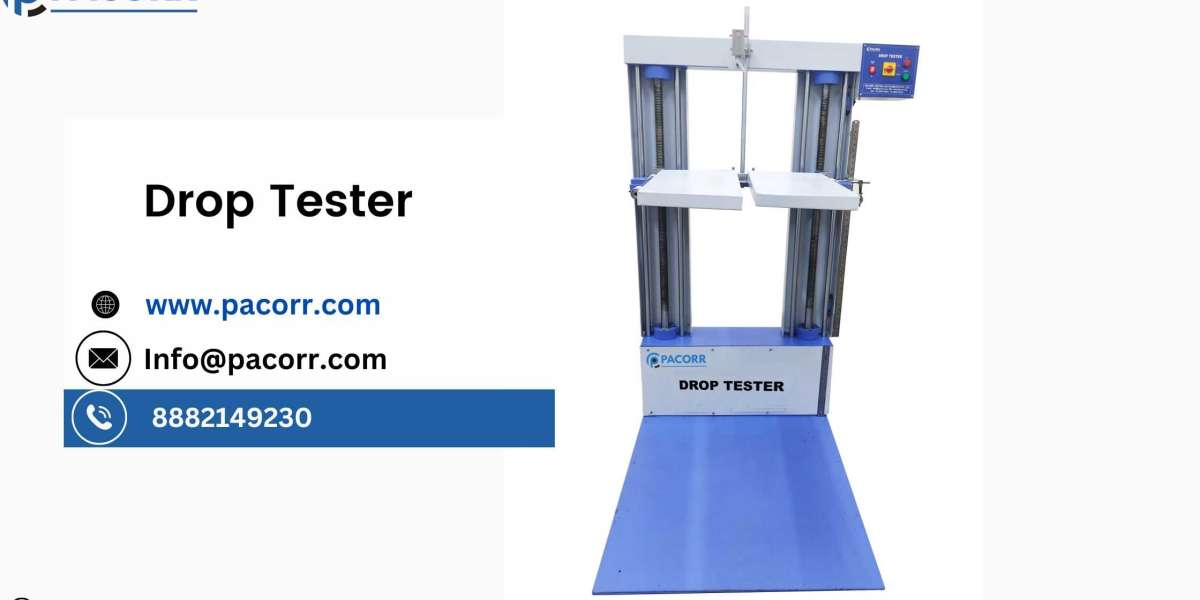This type of testing equipment is crucial in the packaging industry, where ensuring the integrity of the packaging during handling, shipping, and storage is essential. It simulates real-world scenarios where packages might be accidentally dropped or mishandled, allowing manufacturers to assess and improve their packaging designs to prevent damage during transit.
Introduction to Drop Testing
Drop testing is a critical phase in the product development lifecycle, aimed at evaluating the robustness and durability of products to withstand impacts during handling, shipping, or everyday use. A drop tester is an essential apparatus in this process, providing a controlled environment to accurately simulate different drop scenarios. This Drop Tester ensures that products meet the required safety and quality standards, minimizing the risk of damage and subsequent warranty claims.
What is a Drop Tester?
A Drop Testing is a specialized piece of equipment designed to evaluate the impact resistance and structural integrity of a product by simulating real-world drop conditions. By dropping an item from a controlled height, manufacturers can assess how well the product withstands physical shocks, identifying potential weaknesses in the design or materials before mass production.
Understanding Drop Testers
A Drop Impact Tester typically consists of a mechanism to hold the test item and a system to release it from a specific height, thereby simulating a drop. The design varies, ranging from simple manual devices to sophisticated automated systems that can replicate complex impact conditions, including different orientations and surfaces.
How Drop Testing is Conducted
Drop testing procedures vary depending on the product being tested, the industry standards, and the specific requirements of the manufacturer. However, the basic principle remains consistent: the item is dropped from a predetermined height onto a hard surface, and the impact's effects are carefully analyzed. This process may be repeated multiple times and from different angles to simulate various scenarios. High-speed cameras, sensors, and other diagnostic tools are often used to capture detailed data on the impact forces, structural integrity, and functional performance of the product after each Drop Tester.
Benefits of Drop Testing
The benefits of incorporating drop testing into the product development cycle are manifold. It not only ensures the product's durability and safety but also helps in:
Reducing the cost of returns and replacements by identifying and rectifying potential weaknesses before products hit the market.
Enhancing customer satisfaction and loyalty by delivering products that meet or exceed durability expectations.
Complying with industry standards and regulations that may require proof of durability testing.
Key Features and Specifications
Adjustable Drop Heights: Allows for testing at various heights to simulate different drop scenarios.
Multiple Drop Surfaces: Includes options for different surfaces (hard, soft, angled) to assess impact on various real-world surfaces.
Orientation Control: Enables testing in different orientations to understand how impacts affect the product in all directions.
Data Collection: Integrated sensors and data acquisition systems measure force, acceleration, and impact duration, providing valuable insights into the product's durability.
Applications of Drop Testers
Consumer Electronics: Ensuring devices like smartphones, tablets, and laptops can withstand drops during everyday use.
Packaging Industry: Testing package integrity and the protection it offers to contents during handling and shipping.
Automotive Components: Assessing the durability of parts and materials against impacts.
Research and Development: Facilitating product improvement by identifying weaknesses in design and materials.
Choosing the Right Drop Tester
Selecting a drop tester involves considering several factors, such as the size and weight of the products to be tested, the range of Drop Tester heights required, the complexity of the drops (single or multi-axis), and the level of data analysis needed. It's also important to consider the tester's compatibility with existing quality control processes and systems.
Best Practices in Drop Testing
Develop a Standard Testing Protocol: Consistency in how tests are conducted ensures reliable and comparable results.
Simulate Real-World Conditions: Test products in scenarios that closely mimic how they will be handled and used.
Analyze and Act on Data: Use the data collected to identify potential improvements in product design and materials.
Repeat Testing as Needed: Conduct tests throughout the development cycle, especially after making changes to the product.
Conclusion
Drop testers play a pivotal role in ensuring that products are capable of withstanding real-world handling and use without sustaining damage. By carefully selecting a drop tester that meets their specific needs and following best practices in Drop Tester, manufacturers can significantly enhance product durability, customer satisfaction, and brand reputation.



